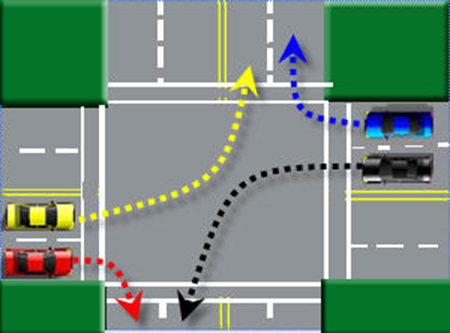 There has been quite a bit of coverage regarding the advent of self driving cars this year. Having spent my share of time commuting in and out of Manhattan, I had plenty of hours to daydream about how hard it would be to implement—but, boy, what tremendous benefit it would be to my productivity! And the thing about rush hour: you know you are not alone, so obviously those benefits will multiply really fast. Clearly, the benefits so dramatically outweigh the costs that autonomous driving technology is actually far ahead of where I would have predicted during one of those traffic-induced daydreams.
There has been quite a bit of coverage regarding the advent of self driving cars this year. Having spent my share of time commuting in and out of Manhattan, I had plenty of hours to daydream about how hard it would be to implement—but, boy, what tremendous benefit it would be to my productivity! And the thing about rush hour: you know you are not alone, so obviously those benefits will multiply really fast. Clearly, the benefits so dramatically outweigh the costs that autonomous driving technology is actually far ahead of where I would have predicted during one of those traffic-induced daydreams.
Have you ever noticed that humans who perform rote, repetitive tasks follow a curve? First we get better at such tasks. Much better. That’s the learning curve on which we like to focus. But, soon after the process becomes rote, something happens. Some sort of ancient human wiring finds a step it seems we can skip. If leaving something out doesn’t cause immediate harm, then we have no feedback to put us back on the intended track. So we continue to skip that step. That wiring may be evolution’s idea of optimization, but it only works well for the first person who is skipping the step. If I am that first person, my task gets easier—but there could be consequences for someone else in the near or far future.
Let’s use a traffic example: Left turns should be made into the left lane. Somehow, people started making left turns into the right lane when their next step will be a right turn, thinking, “Yay me, I get to skip the lane change!” But this trick that works most of the time in rural areas and often in suburban areas doesn’t work at all in NYC. You might not realize that somebody expects you to follow the rules strictly, so they can use the right lane safely. This is one reason why collisions happen; humans make mistakes, often merely by skipping steps.
The same is true in business processes: Human workers cannot be trusted to perform all the steps that don’t have an immediate impact on them, so there will be errors and omissions. Plus the combined time spent performing and correcting these rote tasks adds up quickly. Some may see these costs as part of business overhead, but rather than accept these costs as unavoidable, they should realize that “self-driving” software can help them out.
Good project management software these days can learn (or be taught by your implementer) the rote, repetitive “standard operating procedures” that make your company run like a well-oiled machine. For example:
- New projects of a certain type need three specific permit applications each and every time—no problem.
- Each is assigned to a specific team member—easy.
- Vendors need to be notified of the start date and then, of every impending spec change—trivial.
Software that knows your business is the key to handling all the aspects of a project’s life cycle reliably and consistently. ROI comes from both the perfect consistency and amazing efficiency that leaves valuable staff members time to handle exceptions instead of the rote. The best part is that they won’t have to worry about the consequences that may or may not follow.
It will still be a while before autonomous vehicles become ubiquitous. But, if you want to automate some of your business processes, the Spitfire Project Management System is available right now. You can get started by scheduling a free demo.
While some technology is still out of reach, it is smart to take advantage of the technology at hand.
Tweet